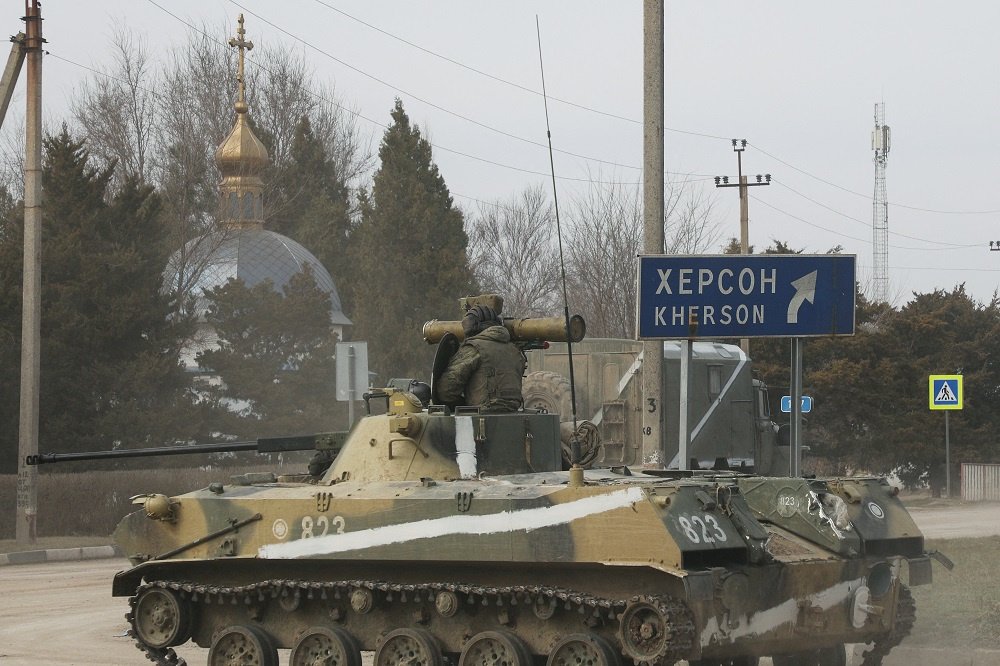Major General Rustam Minnekaev, Deputy Commander of Russia’s Central Military District, has announced that Russia’s Ministry of Defence now intends to establish full control over the Donbas and the south of Ukraine, according to Russian state news agency TASS.
According to the general, Russia now intends to create a land corridor linking Crimea to Russia through the Donbas, as well as another land passage to Transnistria, an unrecognised breakaway republic in neighbouring Moldova which has had a Russian military presence since 1992.
“One of the tasks of the Russian army is to establish full control over the Donbas and southern Ukraine,” the General said at a meeting with heads of the Russian defence industry.
Since the start of the war on 24 February, Russia’s invasion has displaced more than 5 million people and has led to the death of at least 2,700 civilians.
Russia has consistently shifted its justification for starting the war. In February, Russian President Vladimir Putin launched his “special military operation” under the pretext of the demilitarisation and “denazification” of Ukraine.
After facing stiff Ukrainian opposition, Russia dropped claims that it was seeking regime change or aiming to annex new territories. Foreign Minister Sergei Lavrov said on 11 April that taking additional territory from Ukraine would “contradict” Russia’s goals.
As Russia’s northern assault on Kyiv and other cities collapsed, Russian rhetoric shifted once again. The goal of the war, rather than to capture Kyiv, was now to “liberate” Ukraine’s Donbas region. A “scaled-back” war, Russia claimed, after military victories in and around Kyiv.
“The main objectives of the first stage of the operation have generally been accomplished,” claimed Sergei Rudskoi, Head of the Russian General Staff’s Main Operational Directorate, at the end of March.
Minnekayev did acknowledge that Russia had taken heavy losses at the start of the war, but stated that Russian forces had “quickly adapted” and “changed tactics.” Russia rocket attacks, he said, allowed Russia to attack Ukrainian forces without losing troops.
Ukrainian estimates put Russian casualties in the war so far as over 20,000.
Russia unlikely to back down
Russia’s intention to seize vast swathes of territory in the south of Ukraine, however, suggest that, while it may have temporarily abandoned its assault on Ukraine’s capital and northern oblasts, the war is set to continue for some time.
Ukrainian Deputy Defence Minister Hanna Malyar claimed on 7 April that Russia’s short-term focus was the invasion of the east of Ukraine, but was now planning to seize all of Ukraine in the long-term.
Two major cities in the south of Ukraine still remain firmly under Ukrainian control. Odesa, Ukraine’s third-largest city and southern cultural capital, and Mykolayiv, where Russian forces were routed in March. Mariupol, a major Ukrainian industrial city on the cost of the Azov city, is currently encircled by Russian forces.
Both the cities of Odesa and Mykolaiv are now heavily fortified against potential Russian invasion. Odesa’s picturesque beachfront and seaside have been fortified with anti-tank obstacles and mines in anticipation of potential Russian naval landings.
Protecting Russian-speakers in Transnistria
If Russia did achieve its offensive through the heavily fortified urban centres in the south of Ukraine, it would control key shipping routes and the export of agricultural exports from Ukraine. The corridor would also allow Moscow to send troops to support Russian-backed proxy forces Transnistria.
The Russian General made a series of baseless allegations about the supposed persecution of Russian speakers in the majority-Russian speaking region. Transnistria is politically independent from Moldova, self governing, and almost entirely Russian speaking. The use of the Russian language is tolerated even in areas of Moldova where Romanian is dominant.
“Control over the south of Ukraine is another route to Transnistria, where there is also evidence that the Russian-speaking population is being oppressed,” Minnekayev claimed. The general provided no evidence to support this statement.
Earlier in the month, Ukrainian intelligence stated that they suspect that airfields in the region were being prepared for use by Moscow to airlift troops into the region.
In March 2022, the Parliamentary Assembly of the Council of Europe (PACE) included a provision recognising Transnistria as a territory under Russian occupation, as part of the resolution which excluded Russia from the Council of Europe.

